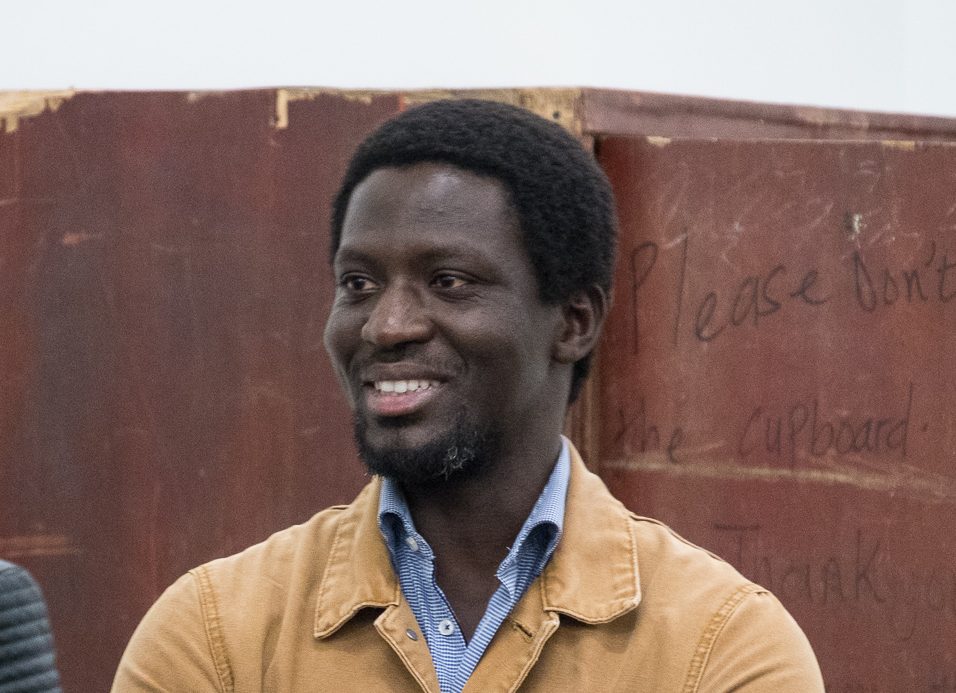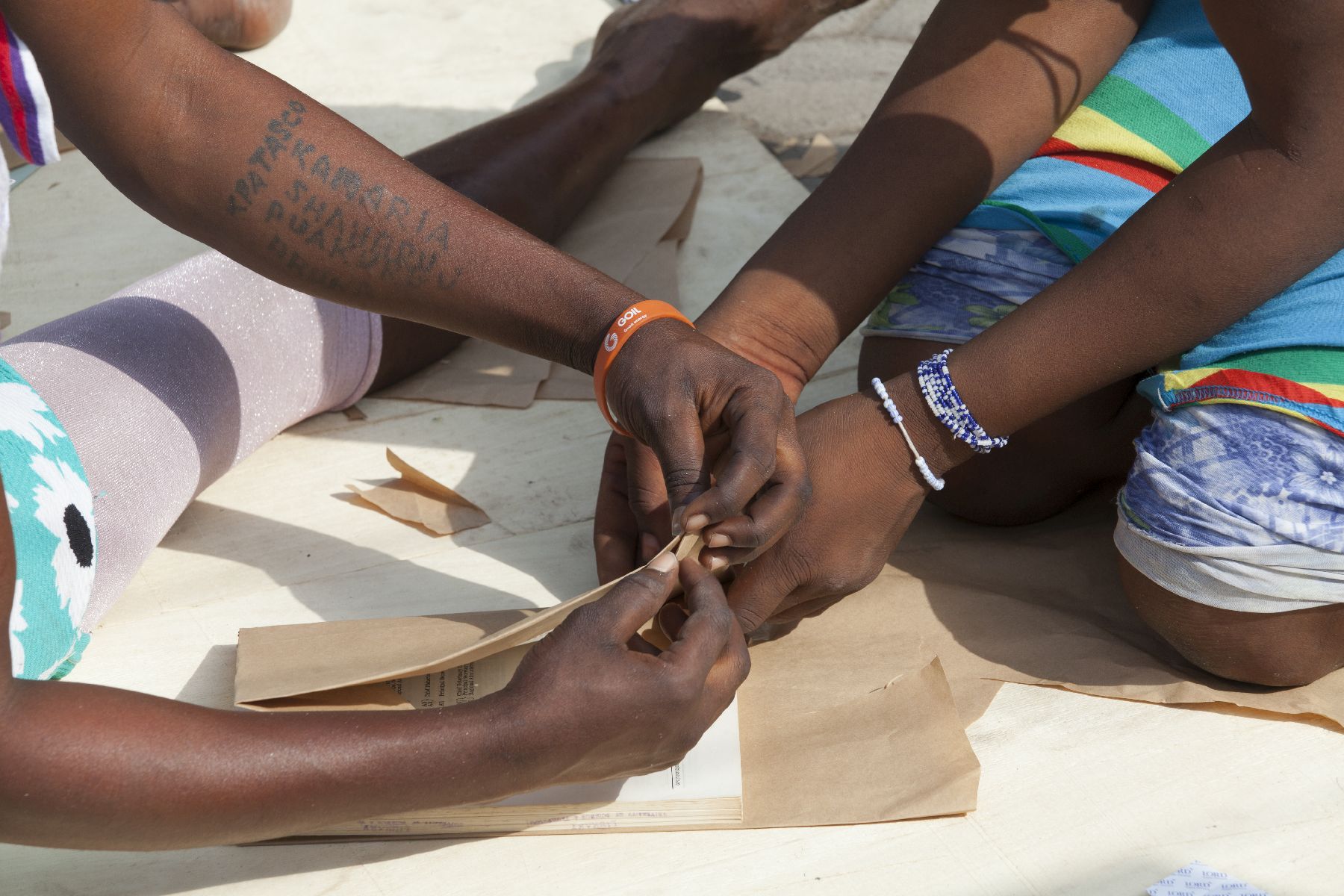Ghana, Visual Arts, 2017
Ibrahim Mohammed
Mahama

Virtually worthless “non-things” are turned into monochromatic urban monuments to the crisis and failure of global capitalism. Ibrahim Mahama (b. 1987 in Tamale, Ghana) occupies space and buildings with his vast surfaces of collaged jute sacks. Occupation is the word that best describes his artistic interventions given that the motivation behind his demanding undertakings is ultimately directed at turning a system of exploitation against itself.
Ghana is one of the countries with a centuries-long history of supplying raw materials—such as cocoa, coffee, and coal—and labor to the rest of the world based on unsustainable principles. This has left its mark on the people, the environment, and on the institutional and political machinery of the country. Mahama intervenes in these systems of circulating goods by recycling the shipping sacks, the practically valueless non-things leftover when all goods have moved on and been consumed—after they have left the hands of workers picking, packing, and carrying them, and are exported or redistributed domestically around the country. What remains are the empty sacks and the traces of the human lives and earthy roads they have passed by, as well as the resistance to wear and tear of the material itself. This is Mahama’s material, which he repurposes and presents in a composite form, installed on a monumental scale that defies what seems possible to produce today with manpower alone.
In addition to the subject of labor, the artist is also interested in the workings of institutions and systems of education, knowledge production, distribution, displacement, and capitalist exploitation. He works directly with these systems in choosing how to take over a space, a site, or a building. The sacks are hand-sewn into composed tapestries several hundred square meters in size by people, often without papers, working in warehouses in Ghana or in locations where he realizes a project. In April this year Mahama is working together with a large team of volunteers and activists in Athens to cover parts of the central Syntagma Square (this time a horizontal surface) with jute sacks sewn together on site for documenta14. Thus, a monochromatic monument to the dark effects of capitalism, which is actually not at all monochrome when viewed close-up like in Athens, is erected or, more accurately, laid out again. Here the individual sack is a testimony to the distances it has covered, a story of human lives, places, forms of transport and goods, but also a physical record of the people passing by, walking over it, and leaving their traces.
The political nature of choosing which buildings to occupy has led Mahama to cover, among others, the university building where he studied in Kumasi, Ghana, the Kwame Nkrumah University of Science and Technology (K.N.U.S.T.) (Occupation and Labour, 2014). In Accra, the capital of Ghana, he recently covered a series of new, yet unfinished, middle-class, high-rise apartment buildings and a new airport building, Civil Aviation, 2014. One of these recent projects was the six-month-long covering of the façade of the Charlottenborg Kunsthal in Copenhagen, which faces the former port once used for importing and exporting wares, now converted into a tourist mile (Nyhavn Kaplang, 2016-17).
Text: Solvej Helweg Ovesen


